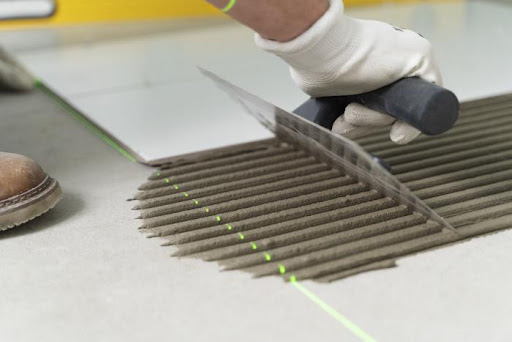When it comes to tile installations, selecting the right adhesive is key to a long-lasting and secure outcome. With the abundance of tile adhesives available, understanding their characteristics and applications is crucial for making informed decisions. Whether you’re a busy mom finally tackling that home improvement project or a seasoned DIY enthusiast sprucing up your kitchen and bathroom, knowing the different types of tile adhesive and their suitable uses can save you time, effort, and potential mishaps along the way.

Mastic
Composed of acrylic copolymers and calcium carbonate, tile mastic is an alternative tile adhesive that has a quicker drying time, at about 24 hours. Tile mastic, recently more commonly referred to as ceramic tile adhesive, is not suitable for areas of high moisture but can make vertical projects easier due to its sticky consistency, providing adhesion in positions where your tile may otherwise slide. Tile mastic is best used for bonding porcelain, glass, or ceramic tile but unlike thinset mortar should not be used to fill gaps due to its watery consistency and is best used for tiles 8″ and smaller. Source: HomeDecorBliss
Standard and Pre-Mixed Thinset
Thinset tile mortar provides a very strong bond and is resistant to moisture and mold growth. Thinset is also heatproof, so it will not lose its grip in hot environments. Because it is cementitious, thinset is dimensionally stable—it will not shrink or contract.
Another advantage of thinset is that it allows you to level uneven surfaces to some degree. You cannot level wildly out-of-level surfaces, but you can bridge gaps and compensate for slight level changes.
Because thinset is not affected by moisture, it is best for floor tile and any tile in wet areas, including shower floors, walls, and ceilings and tub surrounds.
Since thinset tile mortar may crack, you may wish to mix it with a special latex additive to increase its strength. Source: TheSpruce
Epoxy Mortar
A combination of epoxy and sand-based powder, this mortar is incredibly durable and stain resistant, and it’s required with some nonporous glass and stone tiles. But it’s hard to trowel, quick to cure, and tough to remove if it gets somewhere you don’t want. Source: ThisOldHouse
If you find yourself stuck and overwhelmed with too many options, feel free to contact us for further information. We’d be happy to assist you with your tiling project!


